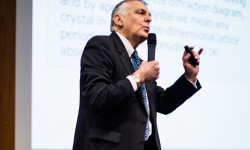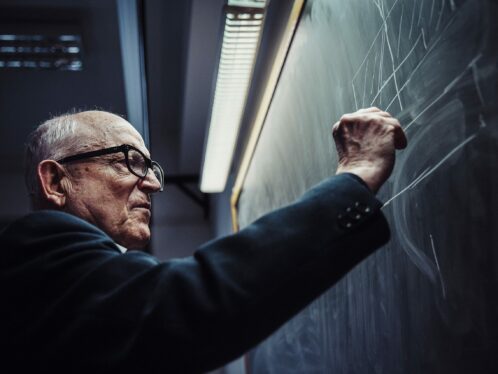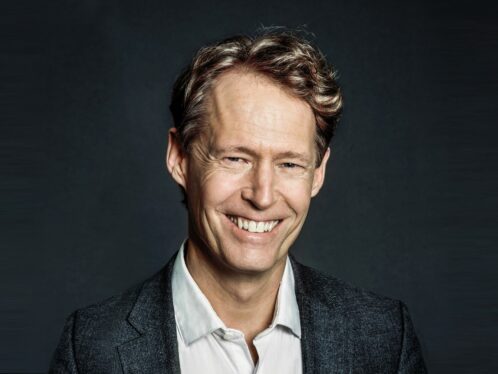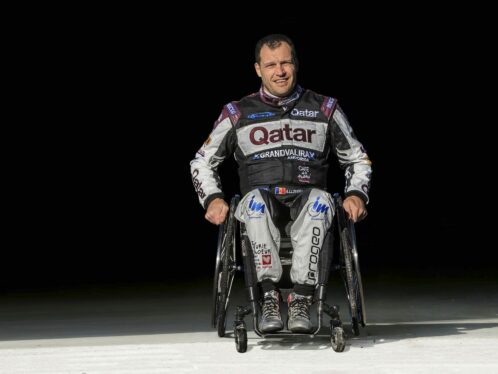
True to the idea
Making a discovery that challenges a deep-rooted scientific paradigm is asking for trouble. Israeli scientist Dan Shechtman knows all about it. It took him years of struggle to win over the scientific world with his “impossible” quasicrystals, but it all ended with the sweetest of victories and the highest of laurels.
Ten-fold?” That simple remark made in a scientist’s diary on 8 April 1982, was the eureka moment for Professor Dan Shechtman from Technion – Israel Institute of Technology, Haifa, Israel. Shechtman, who has a doctorate in materials sciences, was using his sabbatical to do a research project for Johns Hopkins University, working at the National Bureau of Standards (NBS) in Maryland in the United States. He was investigating new alloys for the American aerospace industry when he hit upon a property hitherto considered “forbidden”: an inherently irregular crystalline structure with a five-fold rotational symmetry. Ironically, Shechtman himself had proved the impossibility of such quasicrystals back when he was a student. Now, he spent the rest of the day trying to falsify his own results, but to no avail. The quasicrystal was here to stay. Shechtman’s discovery raised some interest, and his host, John Cahn of NBS, was encouraging, but he was also hit by a tidal wave of scepticism and hostility. “The two years that followed were very lonely,” he says. “I was ridiculed, scolded and treated like a scientific quack. A friend told me to leave his research group because he considered me a disgrace.” Upon his return to Haifa, Shechtman met with the more open-minded spirit of Ilan Blech, who provided a theoretical framework for the quasi-crystals, and together they wrote an article on the topic in 1984. It was rejected on the grounds of not being “interesting enough”. A few months later they published a revised version of the same article, including two more authors – John Cahn and Denis Gratias – in another magazine. At that point, Shechtman says, “all hell broke loose.” At that time, the ruling paradigm about crystal structures stated that all crystals are periodic and therefore have only a one-, two-, three-, four- or six-fold rotation symmetry. Everything else was simply unthinkable. “This was a paradigm based not on theory but on the accumulated evidence of a vast number of studies,” Shechtman says. “Here I showed up with a five-fold symmetry, but the almighty International Union of Crystallography was not prepared to relinquish their truth without a fight.” Shechtman’s opponents included Linus Pauling, a two-time Nobel laureate with a towering reputation. But, backed by a growing army of believers and a growing body of evidence, Shechtman saw his star begin to rise. One discovery followed another. Quasicrystals were easy to synthesize in many alloys, and some quasicrystals were stable. In 1994, the battle suddenly abated with two events: the passing of Linus Pauling and the formal revision of the paradigm on crystals by the Union. Shechtman’s reputation was vindicated, and in the course of his career he was to collect an impressive number of awards and prizes for his work. In 2011 came the highest honour of all: the Nobel Prize in Chemistry. Shechtman is still at the forefront of crystal research at Technion and has no plans to slow down. Aside from his scientific work, Shechtman is passionate about promoting science and education among young people and has set up and chaired several school programmes in Israel. The charming and charismatic professor is a born educator himself, as he recently has demonstrated at SKF Engineering and Research Centre in Nieuwegein, the Netherlands. Here he was invited to give a lecture on the occasion of the 100th anniversary of SKF in Belgium and the Netherlands. With a captivated audience, he shared his long experience as a researcher and a champion for a just cause. “Quasicrystals were a chance discovery,” he recalled. “But in life you have to make Mr. Chance meet you, and grab his hand when you do. I was lucky enough to be given free rein in my research. Actually, I found those crystals in a totally useless alloy, which I had made just to see what could be learned from it.” From then on, Shechtman’s battle for recognition became a textbook example of perseverance and strong will. “Be a professional,” he says. “And be open-minded. If your results don’t match the rules, dare to question the rules. And above all, if you know you’re right, make a stand. Be a Rottweiler. When you bite into something unusual, don’t let go until you find what it is.” The development of new quasicrystals and their application is a relatively new scientific field. At this point, their practical use is still fairly limited. They are mainly used in high-quality steel alloys for items such as injection syringes and razor blades, but the potential of the new materials is mind-boggling. Yet their greatest significance is not in their practicality but in the radically new approach they represent towards the study of elementary structures. It was this paradigm shift that ultimately won Shechtman his Nobel Prize.





